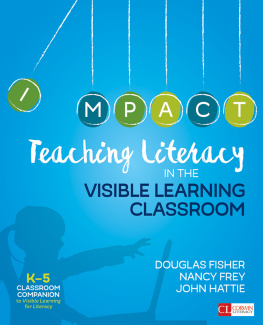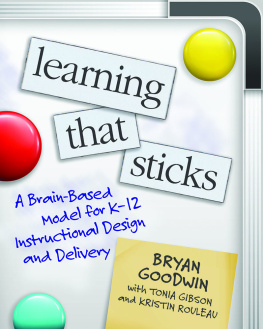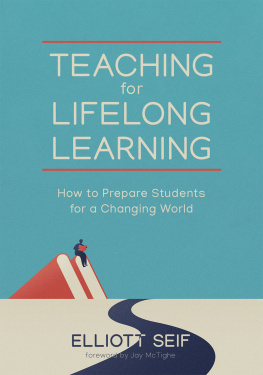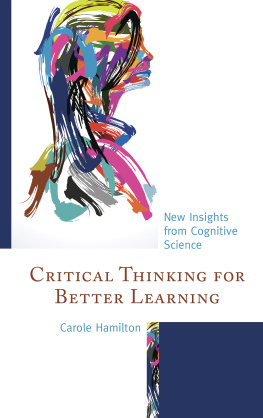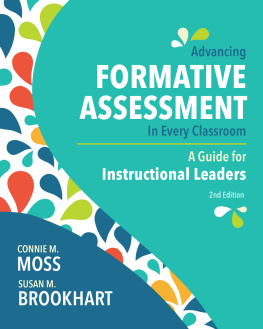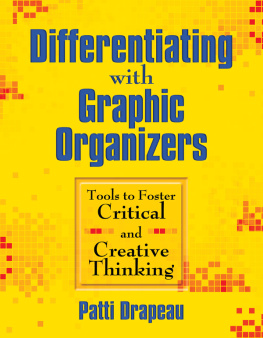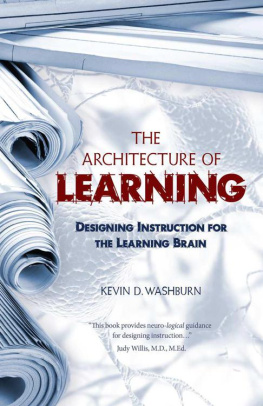Contents
Guide
Pages for Designed to Learn



ASCD Member Book
Many ASCD members received this book as a member benefit upon its initial release.
Learn more
Dedication
....................
To my best teachers, Judah and Levi. May you always use your voice for good and work to design a more just and equitable future for all of us.
Praise for Designed to Learn
....................
It's critically important for Portnoy's argument to get heard at every levelcitizens, teachers, and schools of education. She proposes an excitingly different paradigm for meeting the challenge. I'm hoping soon to see my colleagues put it into action!
Deborah Meier,
MacArthur awardwinning educator, reformer, and author
A timely resource that needs to be in every teacher and administrator's hands. Lindsay Portnoy has provided us with the ultimate resource for transforming a school's curriculum. This book will fundamentally change your mindset and begs the reader to ask: Are we ready to share in the work of reviving purposeful education that encourages students to embrace their talents and maximize their fullest potential?
Michael J. Hynes,
Superintendent of Schools for the Port Washington School District
Lindsay Portnoy is a force of nature: part teacher, part cognitive scientist, part instructional designer, part historian, part educational futurist. She is the perfect guide to help our schools navigate this uncertain time. Her book is essential reading.
Greg Toppo,
author, The Game Believes in You:
How Digital Play Can Make Our Kids Smarter
Acknowledgments
....................
It was much easier to be a parent before I had children, just as it was much easier to write a book before one was waiting to be written. Thankfully, I'm standing on the shoulders of many remarkable folks whose guidance and support paved my way and for whom I am truly grateful.
I would like to express my deepest gratitude to my fellow educators who so generously shared their stories within these pages. What an honor it is to have to elevate your great work: Amber Coleman-Mortley, Heidi Bernasconi, MaryRose Joseph, Karen Schrier, Jody Drezner Alperin, Vicky Finney Crouch, Vicky Lang, Barbara Bray, Matt Farber, Jay Billy, Laura Steinbrink, Dana Roth, Sarah Fiess, Andrea Henkel, Barbara Gruener, Paula Dillon, Catherine Croft, Adam Norwood, and Emily O'Rourke.
I would also like to thank my two cofounders, Jessica Ochoa Hendrix and Mand Holford, whose passion for creating immersive learning experiences to bring science out of the lab and into the hands of learners inspires me daily.
It is true that an educator affects eternity, and it was my 6th grade teacher Karl Klimek who showed us we were never too young to dream big and my high school mentors Kristie Paull Syron, Jeannee Turner, and Greg Cleveland who taught us that iteration is never truly over, even after the last curtain falls. I am so very grateful for my mentor Mitchell Rabinowitz, who challenged me to think deeply about the heuristics of problem solving across domains and pushed me to relentlessly question everything (except pinot).
Thank you to the dream team at ASCD, from my brilliant editors Susan Hills and Liz Wegner, whose constructive feedback significantly improved the writing in these pages; to Georgia Park, whose artwork perfectly encapsulates the flexible yet intentional nature of design thinking; to Alexa Epitropoulos, who has impeccable timing and a heart of gold.
A tremendous thank you to my dear friend and colleague Amy Rodriguez, original member of my thought tribe who was and is always willing to provide sincere feedback. A heartfelt thank you to my colleague Chris Unger, a veritable change agent in education and constant source of inspiration whose connections to extraordinary educators globally inspired many of the vignettes in this work. And thank you to Cameron McClure and Jonathan Lyons, whose expertise in writing and friendship has no limits.
Parenting is not for the faint of heart, and I am grateful to my parents who worked endlessly to make sure we had what we needed to thrive.
Thank you to my incredible husband Gary for not only providing regular feedback on each chapter but also wrangling the kids so I could spend another weekend in the stacks of our local library. Thank you for giving me the space and support I needed to bring this passion project to life. For the hugs, love, and affirmations on the days I need it most, I am forever grateful to my two boys, Judah and Levi.
Lastly, I'd like to give thanks to my students, whose feedback pushes me to always be better, and without whom I wouldn't be the one thing that makes me happiest, a teacher.
Introduction
....................
Did you know when you wonder you're learning?
Fred Rogers
This story starts with Tech Valley, a dynamic high school in Albany, New York, that leverages community relationships to enhance student learning and help students see themselves as valuable members of their community who can bring about positive change. School outreach coordinator Sarah Fiess works tirelessly to bring in community members to share their expertise and demonstrate how students' classroom learning applies to the world outside school.
It was a week after one such visit that environmental science teacher Ashley Phillips introduced the topic of population dynamics. Using passages from Michael Pollan's book, The Omnivore's Dilemma, Phillips asked students to share their thoughts on food scarcity and its impact on the local and global community.
What followed was a sort of Socratic seminar in which students questioned human nutritional requirements, types of agriculture, genetic engineering, irrigation, and pesticides. One student recalled how a local information security expert who had visited the school made the connection between food scarcity and protecting resources against a cyberattack. Another student wondered aloud, "How can we help all people see the impact of the decisions they make on everyone in their community and our world?"
Phillips challenged the students to create an experience that would help people understand population dynamics. One student suggested creating a card game, a suggestion that was enthusiastically embraced. The game, ultimately named Pressing Issues, would include a series of cards that introduced a problem in the form of a question such as, "What are the best national policies that can be put in place to address overpopulation?" Players were to choose a solution from among the solution cards in their hands and then defend it. To create the game, students had to research the implications of population growth and enumerate the advantages and disadvantages associated with each of the myriad solutions. To refine and improve the game, they solicited feedback from peers who served as game testers.
And that's how a simple wondering turned into an amazing learning experience. As a guide on the side, the teacher was able to teach environmental science content in a way that was deeply engaging and driven by student learners.
Designing to Learn


